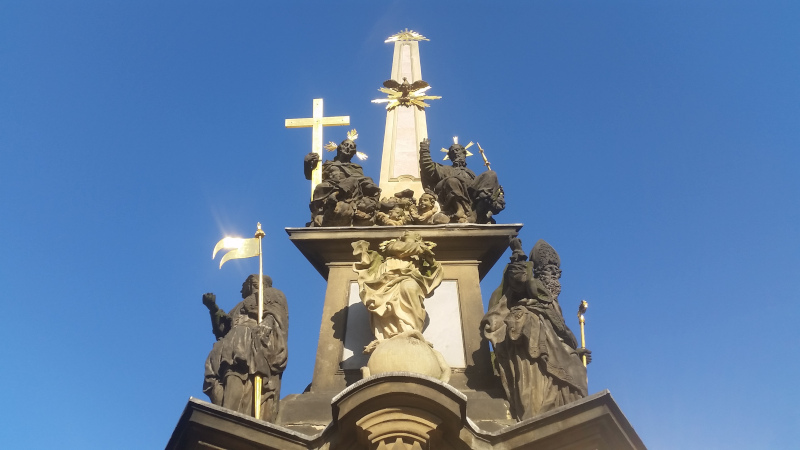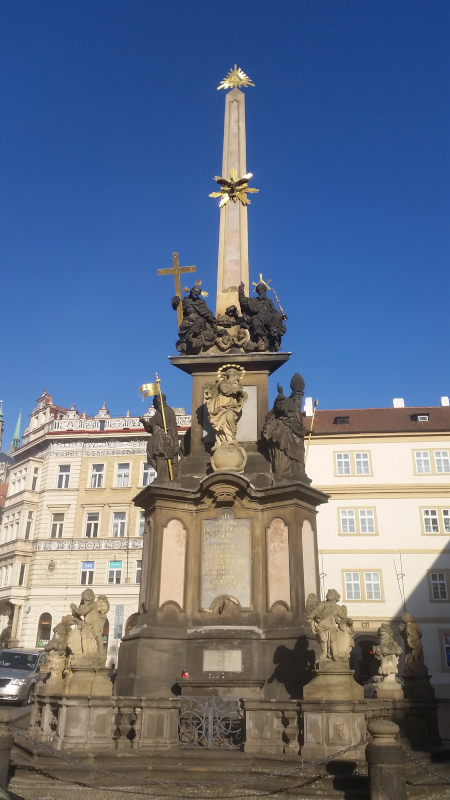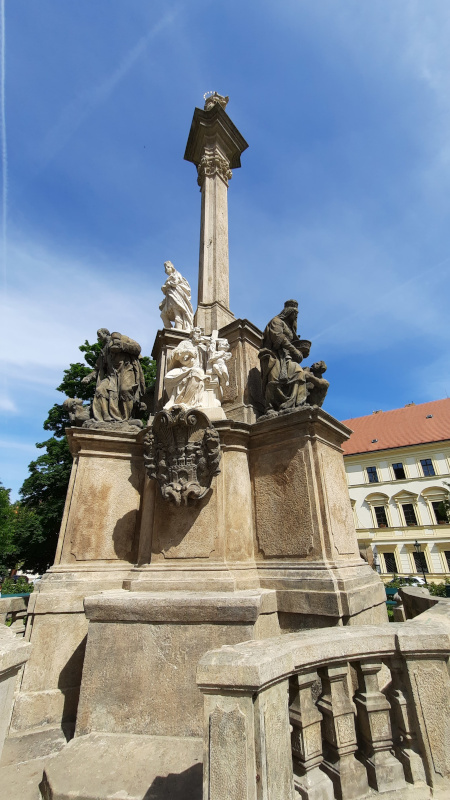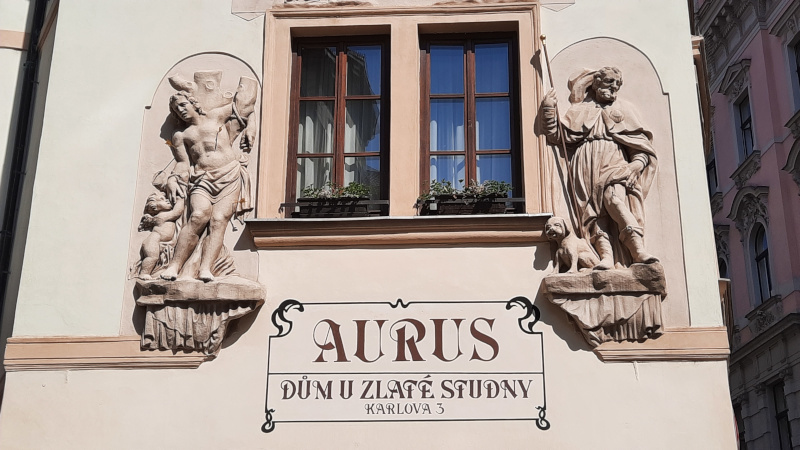Plague Columns
You’ll walk past these as you wander through Czech towns and cities. Here I’ll point out the two Prague Plague Columns related to the Bubonic Plague outbreak in the early 18th Century. They will have a strong religious connection and are giving thanks for the ending of a bad period of suffering. In some cases they can be called Marian Columns if the top of the column hosts the Virgin Mary. Otherwise the lower pedestal decoration will be either Czech Patron Saints or important saints of the period. They are located in squares acting as places for huge open-air religious services that could be performed as large internal gatherings has been discouraged.

The Bubonic Plague of 1713-14
There had been outbreaks of Plague in Prague quite frequently from 1620 because of the conditions caused by the Thirty Years War but it had subsided until July 1713 when it returned. The city had a population of approximately 35,000 and by the end of that year the plague had killed 12,000 or just over 30% of the city.
Prague Plague Columns that Commemorate the Bubonic Plague
Lesser Town

Behind the ST Nicholas Church on the Lesser Town Square is another Plague Column completed in 1715 which is thought to be in this location because open-air religious services were held in this place. It’s also called the Trinity Column because of the triangular “Eye of God”. All of the figures are Czech Patron Saints, Nepomuk, Vojtech, Ludmila, Prokop and Wenceslas. As a little extra, after the famine of 1772 ended, the cherub figures were added to the upper pedestal.
Hradčany

Go to the main entry of the Prague Castle then face away from it. About 150 metres in front of you is a green area which contains the Plague Column and this one can also be called a Marian Column. It gives thanks for the end of the 1713-14 Bubonic Plague but financial issues meant it was not completed until 1736. This column also has ST Wenceslas, ST Jan Nepomuk and ST Vojtech but also ST Peter, ST Paul, ST Elizabeth of Duryn (princess who cared for poor and sick people), ST Florian and ST Charles of Borromeo (cardinal who cared for the poor and sick).
How Regular People Gave Thanks
Two saints are specifically linked to plague victims but as neither of these are regional Czech Patron Saints then you don’t see them on the Prague Plague Columns.

ST Rocchus
Statues of ST Rocchus mean you are giving thanks that you survived the plague. The ST Rocchus story is of a priest who tended to plague victims, became infected and walked out of the city to die in the forest. He drinks fresh water from streams in the forest and a dog brings him bread so he survives. He’ll be a figure of a man with stick and a dog at his feet. He is on the right in the picture above.
ST Sebastian
The other one is Saint Sebastian and he is associated with the suffering of the plague victims whether they lived or died. ST Sebastian was a figure from the 3rd Century, a Christian who converted others to Christianity when that was against the law. The legend goes that he is caught, tied to a tree and shot through with arrows. The archers walk away, but Sebastian had not died. He was nursed back to health but then, two years later, he shouted that the Emperor was doing bad things. He was clubbed to death by guards and thrown into a sewer. Hardly surprising that he became the patron saint of suffering and images up to the early 14th Century show him with arrows all over the place. That’s how you’ll recognise his statue. He is on the left in the picture above.
Then a strange thing happens. From around 1350, images of him still contain the arrows but now they often appear in specific places so spend some time looking at WHERE the arrows are located. If the statue is accurate you won’t find them in the head, stomach or chest. Instead they’ll be located in the neck, armpit, groin and thigh. It might just be one of those wild coincidences but these are the four areas of the body that contain lymph nodes which were attacked by the Bubonic plague, became poisonous, turned black and ultimately killed the victim. An arrow is an historic symbol identifying the wounds of plague victims. It’s not stretching the imagination to think that to bridge the gap between the masses and the divine, that the 14th Century church turned to specific historic religious characters to take on new roles and who’s the guy with all the arrows stuck in him? Welcome to Saint Sebastian, your new and improved patron saint of plague victims. mmmh!
Something Related or a Few Minutes Away
Memorials – 10 More Things About the Marian Column
Jewish Prague – Zizkov Old Jewish Cemetery
Churches – ST Cyril and ST Methodius (formerly the Church of ST Borromeo)
